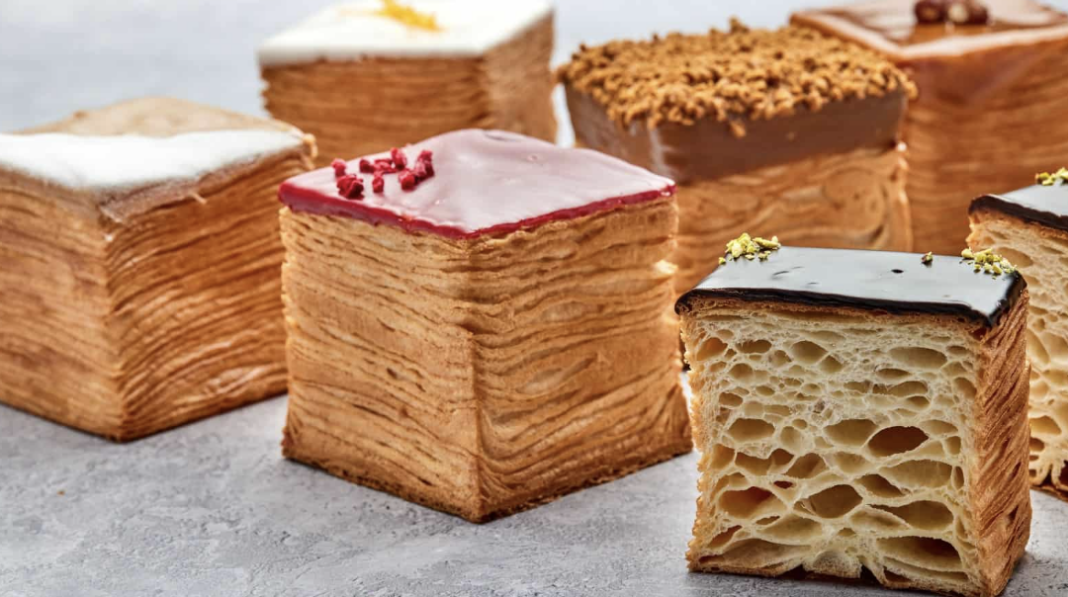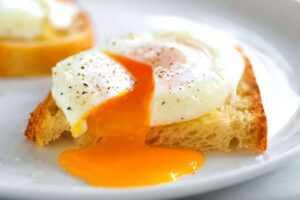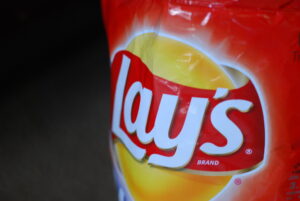Move Over, Cronut… The Crubik Is Here!
Say hello to the Crubik, a cube-shaped croissant that’s taking the pastry world by storm. This innovative twist on the classic croissant is not only visually striking but also a delicious hit with foodies everywhere.
With its unique design and flaky, buttery layers, the Crubik is redefining how we enjoy this beloved pastry. Forget the Cronut, the Crubik is the latest must-try treat that’s turning heads and winning hearts!
The Evolution of Croissants: From Classic to Cube
Croissants have long been a staple in the pastry world, with their flaky layers and buttery taste delighting taste buds for centuries. However, in recent years, a new trend has emerged that takes the traditional croissant to a whole new level – the cube croissant. This innovative twist on a classic has taken the pastry world by storm, captivating both pastry enthusiasts and social media users alike.
What Are Cube Croissants and Why Are They Trending?
Cube croissants, as the name suggests, are croissants that have been transformed into cube-shaped pastries. This unique shape is achieved by carefully layering and folding the dough, resulting in a visually stunning and Instagram-worthy treat. The cube croissant trend has gained popularity due to its aesthetic appeal and the novelty factor it brings to the traditional croissant.
The Art of Crafting Cube Croissants: A Delicate Process
Crafting cube croissants is no easy feat. It requires a delicate and precise process to achieve the perfect layers and shape. Pastry chefs meticulously roll out the dough, layer it with butter, and fold it multiple times to create the distinct flaky texture. The dough is then cut into squares and baked to perfection. This intricate process requires skill, patience, and attention to detail, making cube croissants a true work of art.
Exploring the Unique Flavors of Cube Croissants
While the shape of cube croissants may be the main attraction, the flavors they offer are equally enticing. Pastry chefs have taken advantage of the cube shape to experiment with different fillings and flavors. From classic chocolate and almond to more adventurous combinations like matcha and raspberry, cube croissants offer a wide range of flavors to suit every palate.
Cube Croissants vs. Traditional Croissants: A Taste Test
The ultimate test of any pastry is its taste, and cube croissants certainly do not disappoint. The unique layering technique used in crafting cube croissants results in an even flakier and more buttery texture compared to traditional croissants. The distinct shape also allows for a more even distribution of fillings, ensuring that every bite is bursting with flavor. In a taste test, cube croissants have been praised for their lightness, crispiness, and rich taste.
The Instagram-Worthy Aesthetics of Cube Croissants
In today’s social media-driven world, aesthetics play a significant role in the popularity of food trends. Cube croissants have become a favorite among Instagrammers and food bloggers due to their visually appealing shape and intricate layers. The cube shape lends itself well to creative plating and styling, making cube croissants a feast for the eyes as well as the taste buds.
Cube Croissants Around the World: Global Influences on the Trend
While the cube croissant trend may have originated in one location, its influence has spread worldwide. Pastry chefs from different countries have put their own spin on the trend, incorporating local flavors and ingredients into their cube croissants. In Japan, for example, cube croissants filled with matcha or red bean paste have become a popular variation. This global influence has further fueled the popularity of cube croissants and contributed to their widespread appeal.
The Science Behind the Perfectly Layered Cube Croissant
Achieving the perfect layers in a cube croissant requires a deep understanding of the science behind pastry-making. The key lies in the precise measurements, temperature control, and timing. The dough must be rolled out to a specific thickness, and the butter must be at the right temperature to ensure proper lamination. The folding and chilling process is crucial to create the distinct layers that make cube croissants so irresistible. Pastry chefs who master the science behind cube croissants can create a truly exceptional pastry.
Cube Croissants: A New Frontier for Pastry Chefs
Cube croissants have opened up a new frontier for pastry chefs, allowing them to push the boundaries of traditional pastry-making. The unique shape and layering technique of cube croissants provide endless opportunities for creativity and innovation. Pastry chefs can experiment with different flavors, fillings, and textures, creating a truly unique and memorable pastry experience for their customers.
The Future of Cube Croissants: Where Will the Trend Take Us?
As with any food trend, the future of cube croissants is uncertain. However, given their growing popularity and the endless possibilities they offer, it is safe to say that cube croissants are here to stay. The trend may continue to evolve, with new flavors, shapes, and techniques emerging. Cube croissants have captured the imagination of pastry enthusiasts worldwide, and it will be exciting to see where this trend takes us in the coming years.
In conclusion, the rise of cube croissants in the pastry world has brought a fresh and exciting twist to the classic croissant. From their delicate crafting process to their unique flavors and Instagram-worthy aesthetics, cube croissants have captivated both pastry chefs and food enthusiasts alike. With their global influences, scientific precision, and endless possibilities for creativity, cube croissants have become a new frontier in the world of pastry-making. As the trend continues to gain momentum, it is clear that cube croissants are not just a passing fad but a delicious and visually stunning addition to the pastry world.
How to make cube croissants
Ingredients
- 3 cups all-purpose flour
- 1/4 cup granulated sugar
- 1/2 teaspoon salt
- 1/4 cup unsalted butter (cold)
- 1 tablespoon active dry yeast
- 1/2 cup water (warm)
- 1/2 cup unsalted butter (room temperature)
- your favorite filling/topping (e.g. chocolate ganache, whipped cream, maple syrup, etc. – optional)
Tools – see recommended products below for links:
- cube mold (required for a perfect cube shape)
- plastic wrap
- rolling pin
- mixing bowl
Instructions
-
- Add the flour, sugar, and salt together in a sizeable mixing bowl.
- In a separate container, dissolve fresh yeast in warm water, and let it sit for five minutes.
- Slice the cold butter into cubes and add 1/4 cup of it to the flour mixture. With your hands, mix the butter until it feels like rough sand.
- Gradually incorporate the yeast mixture into the flour mixture until it forms a dough. Knead the dough for about 10 minutes until it becomes smooth and elastic.
- Cover the dough with plastic wrap and allow it to rest for an hour until it doubles in size.
- Roll out the dough into a large rectangle.
- Spread room-temperature butter over two-thirds of the dough.
- Fold the unbuttered third over the middle third, then fold the other end over that (like folding a letter).
- Roll out the dough again into a large rectangle.
- Repeat steps 8 and 9.
- Fully cover the dough in plastic wrap and refrigerate overnight.
- The next day, either 1) cut the dough into squares slightly smaller than the bottom of the cube mold leaving room to expand; stack the squares until a cube is formed—optional: after stacking halfway, carefully pipe desired filling into the center of the cube), or for a spiral design 2) cut the dough into long triangles and roll into a spiral (must fit into box diagonally)
- Bake at 375°F for approximately 20 minutes.
- Add any desired toppings. Bon appétit!










